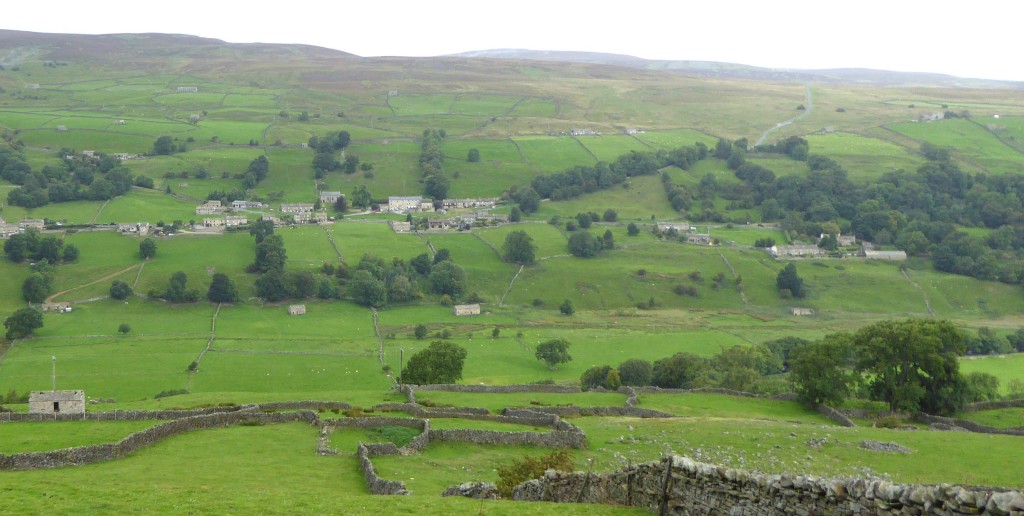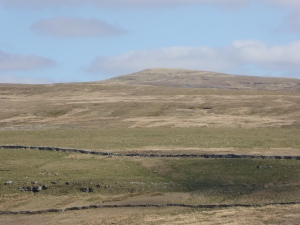This section from the Bartholomew half-inch map, Great Britain Series, Sheet 35 (1942), shows the three best-known Kisdon place-names – a waterfall, a hill, and a farm. Map reproduced with permission of the National Library of Scotland https://maps.nls.uk/index.html.
Kisdon in upper Swaledale is best-known as the name of a distinctive, isolated hill. But it’s also the name of several other topographical features to the east of it. So, which was the original Kisdon and what does it mean? It’s a difficult puzzle, but there are clues to be drawn from early records of places with similar names and from the similarity of their landscapes. By clicking here – Kisdon – multiple place-names – you can read a summary and conclusion from a detailed investigation, or in the same place you can download a pdf containing a lengthy article exploring how the most likely possibilities were considered and whittled down.










